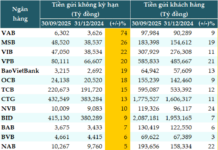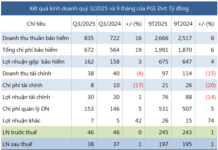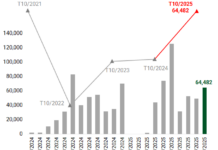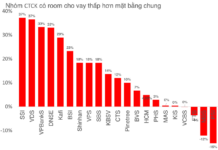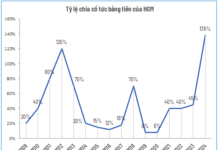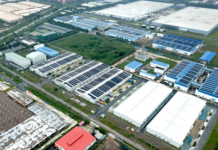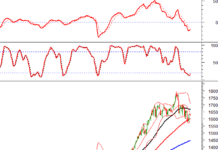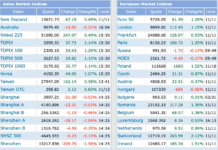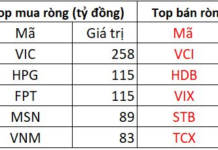The latest survey by the Forecasting and Statistics Department (SBV) reveals that in the first half of 2024, credit institutions (CIs) met the overall borrowing needs of their customers at a higher rate than the previous year. To facilitate business and individual access to credit, CIs tended to maintain or loosen their lending policies during this period. This trend is expected to continue in the second half, with some areas, such as mortgage lending, seeing further easing.
Recently, many banks have been actively disbursing loans with attractive interest rates. In addition to competitive rates, some banks offer debt moratoriums for a certain period, reduced early repayment penalties, and simplified loan procedures to attract borrowers.

Banks are offering competitive loan packages to attract borrowers.
Market surveys indicate that mortgage interest rates are at their lowest in a decade. In the first year, the average interest rate ranges from 5-6%/year. From the second year onwards, a floating rate is applied, consisting of the base rate plus a margin. Some commercial banks offer promotional rates below 5%/year for the first 3-6 months. State-owned banks also provide competitive packages, with rates fixed at around 6%/year for the first 1-2 years.
Ms. Nguyen Thi Thao, Director of Seabank’s Dai An branch, advises borrowers to opt for the longest repayment term available, currently up to 35 years, to reduce repayment pressure. She also recommends taking advantage of debt moratoriums of up to 18 months and promotional interest rates of 5.5% for the first year. “After the promotional period, the interest rate will fluctuate around 10%, which is a very attractive rate considering historical data,” she adds.
According to FiinRatings, credit growth for the real estate business, including corporate bond investment in the real estate sector, is expected to recover as legal issues are gradually resolved. New laws are also anticipated to create more favorable conditions. FiinRatings forecasts a 16%-18% increase in bank lending to the real estate business in 2024.
Mr. Nguyen Quang Huy, Director of Finance and Banking at Nguyen Trai University, believes that with the government and ministries’ supportive policies, many real estate projects have been unblocked. “People are showing more interest in real estate, especially affordable properties priced between VND 2-5 billion. According to statistics, 60% of people are interested in this segment. However, with the average income of Vietnamese people, not everyone can afford it, hence the need for bank loans,” he says.
While lower interest rates are expected to boost the real estate market, transaction activities have not seen significant improvement. Investors and buyers remain cautious, and there are not many real demand buyers. According to batdongsan.com.vn, transactions for private homes, townhouses, and land in the second quarter of 2024 could not maintain the positive momentum of the beginning of the year. Their survey shows that only 29% of land transactions and 18% of private home transactions were successful during this period.
Notably, in this quarter, the market is still in an exploratory phase, with buyers prioritizing certainty, such as real housing needs, clear legal status, good financial support policies, stable rental yields, and optimized costs. At this stage, apartments are attracting the most attention and recording the best liquidity among all property types.

Lower interest rates on new loans have only partially impacted the real estate market, with most transactions driven by real demand.
Mr. Nguyen Quoc Anh, Deputy General Director of Batdongsan.com.vn, points out that short-term promotional interest rates do not significantly influence homebuyers’ decision to borrow from banks. “Home loan tenures typically range from 10 to 15 or even 20 years, so the promotional rate for the first 1-2 years is not a significant factor in the total cost of borrowing,” he explains.
Moreover, investors who borrowed from banks between 2022 and early 2023 are still burdened with high-interest rates. Banks rarely offer reduced rates to existing borrowers, resulting in floating rates as high as 15-16%/year. This reality discourages potential borrowers, who fear finding themselves in a similar situation.






